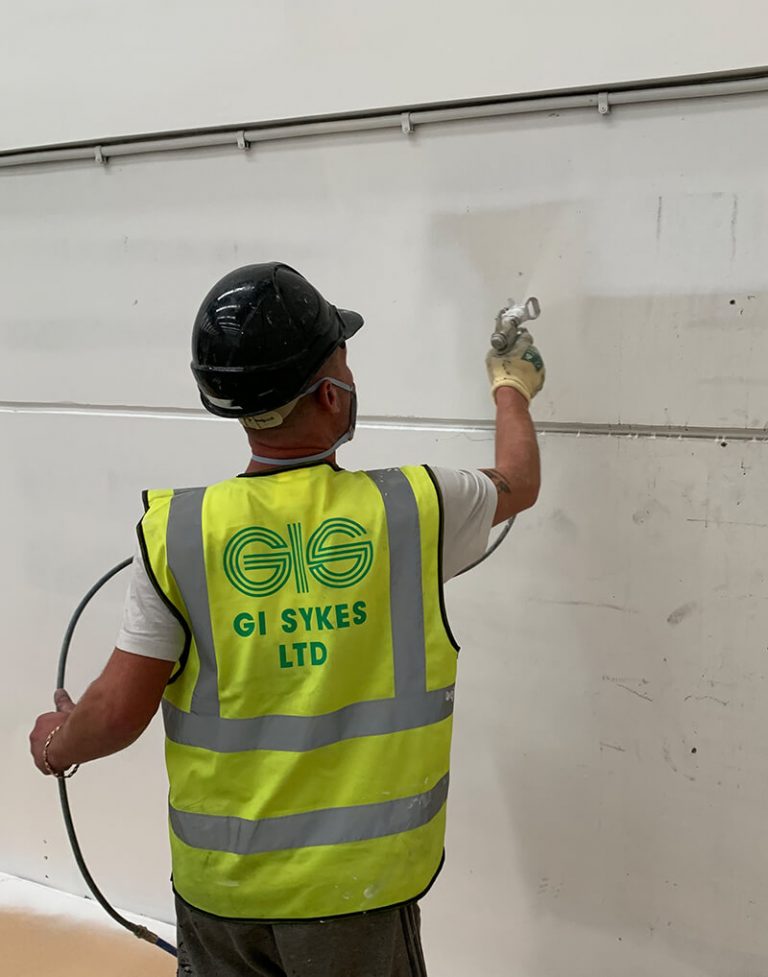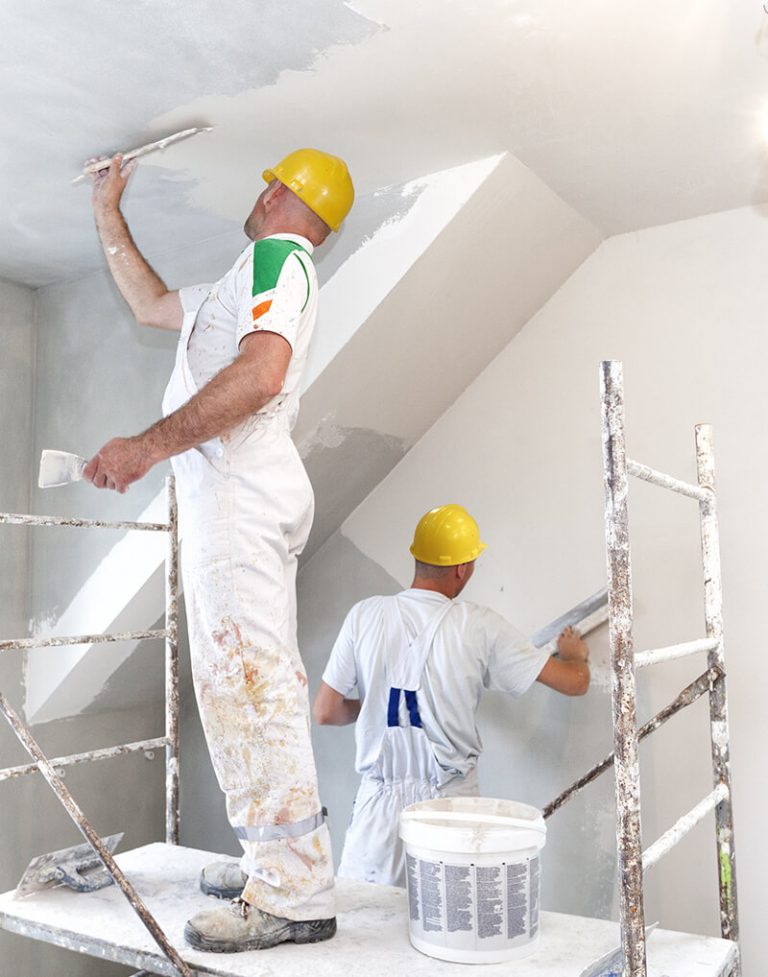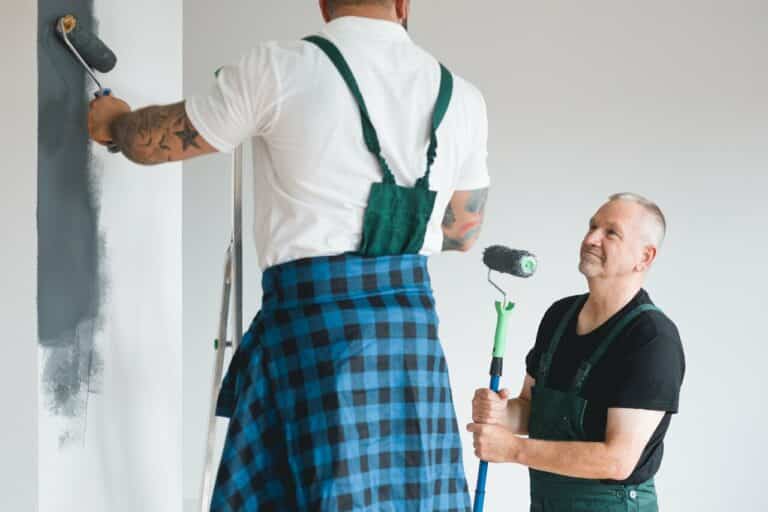Building repairs are an expected part of owning or managing a building, but there are some building repairs that fill you with dread – not only because of the cost but because of the impact on your business or tenants. Damp is one of these.
Damp in a building doesn’t always mean disaster. In some cases, rather than building repairs you just need to educate yourself and anyone using your building on how to avoid it. However, worst-case scenarios do need interventions – luckily at GI Sykes, we have a team of experts who can make the process simple with minimal disruptions.
So, if you suspect damp problems in your building, read on to see what practical things you can do to avoid or fix it…
What is Damp?
According to the font of knowledge that is Wikipedia, ‘structural dampness is the presence of unwanted moisture in the structure of a building’. We’re yet to come across wanted moisture in the structure of a building, by the way!
Damp can be categorised into two types; penetrating damp and rising damp.
Penetrating damp is a result of water infiltration through an external wall into the property through a defect in the building or the external brickwork that has become porus.
Rising Damp is the name given to the process of water in the ground climbing vertically through pores in the brickwork.
There is some controversy over the legitimacy of the term ‘rising damp’ (we know, the trade is overflowing with excitement). One expert, Stephen Boniface, once said ‘true rising damp is a myth’ which caused a bit of stir in the industry – although he did later clarify that he’d made the comment as a way to open up a seminar stating the opposite opinion with a big impact.
Sadly his statement, while creating a buzz, was taken out of context and even now, more than a decade later, there are still blogs and articles citing this remark as evidence that rising damp doesn’t exist! (There’s probably a lesson in here about making sure your message is clear, but that’s for another day!)
Signs Of Damp
Some signs that you are in need of building repairs are obvious; cracks, uneven surfaces, dripping leaks – but what are the signs that your building has a damp problem?
A Musty Smell
Damp has a particular scent, it smells earthy like old mushrooms. If you notice a change in the aroma in your building, it is worth investigating further.
Wet Walls And Windows
Condensation is a key indicator that building repairs are needed. Condensation happens when warm moist air inside your building comes into contact with a colder surface. Most properties will have a little condensation, bathrooms and shower rooms are notorious for it. But if you are seeing large patches of mould on your walls, ceilings or around the windows, you probably have a larger issue that needs resolving.
If your walls look wet but don’t have water on the surface, there’s a chance the moisture is inside the wall itself. This is a sign of rising damp and will need urgent attention.
Warping Furniture
Damp particularly affects wood so, in cases of serious damp, we expect to see skirting and wooden furniture take in some of the moisture. This can result in bending and warping of the wood, and if left untreated, eventual rotting.
Causes Of Damp
So, now you can identify whether or not you have damp, what’s caused it in the first place?
Hot Air
The primary cause of superficial damp is too much moisture in the air. Hot showers, cooking and dry clothes on radiators are the usual culprits.
Drips
Small leaks from pipes can go on to create huge areas of damp. And as they’re small, the problem can go undetected for some time which means that by the time you notice, you may have a significant issue on your hands.
Gutter Defects
Damaged or wrongly installed guttering allows water to run down the walls, which over time, can lead to water ingress in your roof space and walls. While easily fixed with simple building repairs to the guttering, getting on top of this issue quickly is vital in reducing the larger problem of the damp.
Damp Course Problems
A missing, bridged or eroded damp proof course is usually the reason for rising damp. Groundwater is absorbed by the brickwork of your building, working its way upwards.
How To Avoid Dump?
Penetrative damp is fairly simple to remedy since the causes are environmental. Some changes to your habits and some building repairs, and your damp should be a thing of the past. To reduce the chances of damp problems or to prevent it from reoccurring, try the following:
Ventilation
A flow of air around your building means that humid air is removed. You can start by opening your windows for a short while each day, but if that’s not enough to shift your damp ventilation systems can be installed to keep moisture at bay.
Ensuring that furniture is away from the wall prevents moisture from getting trapped between the surfaces. This reduces the likelihood of damp and any building repairs that arise from that.
Keep The Property Warm
In an ideal world, you’d be able to keep a low heat in your building throughout the colder months as this keeps the walls warm so condensation can’t form. But with the way the energy market is, it’s not likely that anyone can afford round the clock heating. Instead having the heat on at intervals can achieve the same outcome – you just need to avoid the building becoming too cold.
Building Repairs
Keeping on top of your building’s maintenance is essential if you want to avoid bigger problems in the future. If your guttering is damaged, wrongly fitted or even just clogged, getting that resolved is simple. At GI Sykes, we offer gutter maintenance that not only prolongs the life of your gutter but also protects against issues like damp. The same goes for roof repairs – a little investment in ongoing care means that you’re less likely to encounter costly problems down the line.
For rising damp issues, you’re going to need specialist help in inspecting the cause of the damp. While there are some temporary measures you can put in place to reduce the effects of rising damp, you will need to resolve the root cause. We’re happy to help you understand your damp problem better, just give us a call to arrange a no-obligation chat.
Got Damp?
If you suspect that you need building repairs to stop damp, then get in touch. We have a specialist team of contractors who can identify the causes of your damp and provide quick, efficient solutions.



